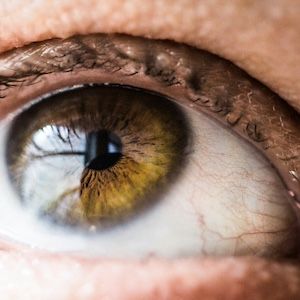News
Article
NEPTUNE: Oral Brepocitinib Effective in Non-infectious Uveitis at 24 Weeks
Author(s):
At 24 weeks, the oral therapy was well-tolerated and the safety profile remained in line with previous brepocitinib studies and the pharmacological class.

Oral brepocitinib therapy exhibited a dose-dependent, clinically-meaningful effect in patients with active non-infectious uveitis (NIU), according to 24-week results from the 52-week Phase 2 NEPTUNE study.
The data, presented at the American Society of Retina Specialists (ASRS) 42nd Annual Meeting, showed the oral therapy was well-tolerated and the safety profile remained in line with previous brepocitinib studies and the pharmacological class.
A rare disease, with a high unmet need, NIU requires safe and effective therapies. Brepocitinib is the only selective TYK2/JAK1 inhibitor in development for NIU and could represent the first oral therapy targeting key cytokines implicated in the pathogens of NIU.
Cytokines include IFNα, IL-12, IL-6, IL-23, and IFN-γ. In six previous placebo-controlled Phase 2 studies, oral brepocitinib displayed statically significant and clinically relevant efficacy in six placebo-controlled Phase 2 studies across various autoimmune disorders.
These 24-week Interim results are from NEPTUNE, a randomized, double-masked, dose-ranging Phase 2 study, investigating oral brepocitinib for active non-infectious intermediate, posterior, and panuveitis.
A total of 26 participants with active inflammatory chorioretinal/retinal vascular lesions or ≥2 vitreous haze were randomized 2:1 to brepocitinib 45 mg or 15 mg once-daily for 52 weeks.
All participants received a standardized prednisone regimen (60 mg/day), in addition to brepocitinib and permitted background therapy, tapered over 8 weeks.
Primary efficacy endpoints were the proportion of participants matching treatment failure criteria, according to vitreous/anterior chamber inflammation, lesion activity, and BCVA from Week 6 through Week 24.
Investigators performed a comparison to a pre-specified historical placebo treatment failure rate of 80%.
Each treatment arm had similar baseline characteristics, with all but a single participant with bilateral uveitis. The mean number of flares in the previous year was 2.
Panuveitis was identified in 59% and 44% of those in the brepocitinib 45 mg and 15 mg cohorts, respectively.
Upon analysis, treatment with brepocitinib 45 mg exhibited a treatment failure rate of 29.4% (95% CI, 10.3 - 56.0), a statistically significant (P <.0001) compared with the pre-specified historical control.
Meanwhile, treatment failure in the brepocitinib 15 mg arm was 44.4% (95% CI, 13.7 - 78.8)
Investigators noted that various measures of the treatment failure criteria demonstrated evidence of dose-response.
Safety analyses showed the adverse event rate was similar between trial arms. No deaths, major adverse cardiovascular events, venous thromboembolic events, or malignancies were identified in the study population.
Reference
Wang R. Safety and Efficacy of Brepocitinib, a TYK2/JAK1 Inhibitor, in Active Non-Infectious Uveitis: 24-Week Results from a 52-Week Phase 2 Study (NEPTUNE). Paper presented at the American Society of Retina Specialists (ASRS) 42nd Annual Meeting. Stockholm, Sweden. July 17-20, 2024.




